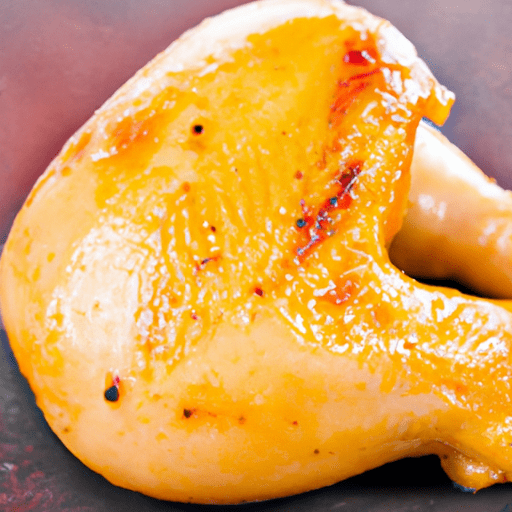The Versatile Delight: Cooked Chicken Breasts
When it comes to proteins, few options are as versatile and beloved as cooked chicken breasts. These tantalizing pieces of poultry have stolen the hearts (and tastebuds) of home cooks and professional chefs alike. Whether grilled, roasted, or pan-seared, the succulent and tender texture of a well-cooked chicken breast is unrivaled. In this article, we’ll delve into its taste, common uses in cooking, nutritional value, and even uncover some interesting history and facts about this culinary superstar.
The Taste
Cooked chicken breasts boast a mild yet distinctive flavor profile that complements a wide range of ingredients and seasonings. With a subtle savory note, these succulent morsels provide a blank canvas for culinary creativity. The flavor intensifies when properly seasoned and cooked to perfection, resulting in a delightful and satisfying dining experience.
Common Uses in Cooking
The culinary possibilities with cooked chicken breasts are practically endless. Its versatility makes it a staple in a variety of cuisines around the world. From simple weeknight dinners to elaborate gourmet creations, here are some common uses of cooked chicken breasts:
Salads: Slice or dice cooked chicken breasts to elevate your greens. Whether it’s a classic Caesar salad or a colorful Cobb salad, the addition of tender chicken adds substance and protein, transforming a simple salad into a hearty meal.
Sandwiches and Wraps: Thinly sliced chicken breasts find their place between two slices of bread or wrapped up in a tortilla. Add your favorite condiments and toppings to create a scrumptious sandwich or wrap that will satisfy even the pickiest eaters.
Stir-Fries and Pasta Dishes: Cooked chicken breasts are a fantastic addition to stir-fries, adding protein and texture to a medley of vegetables. Furthermore, their versatility shines in pasta dishes such as fettuccine Alfredo or creamy chicken carbonara.
Savory Pies and Casseroles: Shredded or cubed cooked chicken breasts are perfect for comforting dishes like pot pies, casseroles, and enchiladas. The juicy chicken elevates these baked dishes, making them satisfying and nourishing.
Nutritional Value
Apart from their delectable taste, cooked chicken breasts also offer excellent nutritional value. They are a lean source of protein, making them a preferred choice for health-conscious individuals. In addition, chicken breasts are low in fat and carbohydrates, making them suitable for various dietary preferences. They are also packed with essential vitamins and minerals, including vitamin B6, phosphorus, and selenium. Not only do they provide your body with nourishment, but they also promote muscle growth and repair.
History and Fun Facts
Chicken, in general, has been consumed across various cultures for centuries. Cooking methods and seasoning preferences differ greatly from region to region. The practice of cooking chicken breasts, specifically, gained popularity during the early 20th century when people started preferring leaner cuts of meat. As a result, chicken breasts, with their lower fat content, became a sought-after choice for health-conscious individuals and those seeking a lighter alternative to red meats.
Interestingly, chicken breasts weren’t always the favored part of the chicken. In older times, dark meat, such as chicken thighs, were considered the more flavorful and sought-after cuts. The appreciation for chicken breasts grew as it became a symbol of modernity and changing dietary preferences.
Cooked chicken breasts not only satisfy our taste buds but also offer us a healthy and versatile protein option. From delicious salads to comforting casseroles, their ability to adapt to various cuisines and cooking styles is truly remarkable. So, whether you’re craving a light and refreshing meal or a hearty and satisfying feast, turn to cooked chicken breasts and let your culinary creativity take flight!
Cooked Chicken Breasts
Origin: Chicken meat, including chicken breasts, comes from domesticated fowl (Gallus gallus domesticus). Chickens have been raised for meat consumption for thousands of years, with evidence of their domestication dating back to at least 2000 BCE in China.
Common Uses: Cooked chicken breasts are a versatile ingredient and are used in various cuisines worldwide. They can be incorporated into salads, sandwiches, wraps, stir-fries, casseroles, soups, and more. Chicken breasts are also commonly grilled, baked, or pan-fried.
Nutritional Benefits: Cooked chicken breasts are a good source of high-quality protein. They also provide essential nutrients like vitamins B6 and B12, niacin, phosphorus, selenium, and potassium. Additionally, chicken breasts are relatively low in fat compared to other cuts of chicken, especially if the skin is removed.
Unique Properties: Chicken breasts have a mild flavor and a tender, moist texture when cooked properly. They are often preferred by individuals looking for a leaner cut of meat. Chicken breasts can be seasoned and marinated to enhance their taste and juiciness.
Historical Significance: Chicken has been consumed for centuries and holds cultural significance in various parts of the world. In ancient Rome, chickens played a role in religious rituals and were even believed to predict the future. Chickens were brought to the Americas by European colonizers, and their meat became a staple in many traditional dishes across the continent.
It’s important to note that while chicken breasts are a popular and healthy protein option, it’s essential to handle and cook them properly to prevent foodborne illnesses.




Use the share button below if you liked it.
It makes me smile, when I see it.